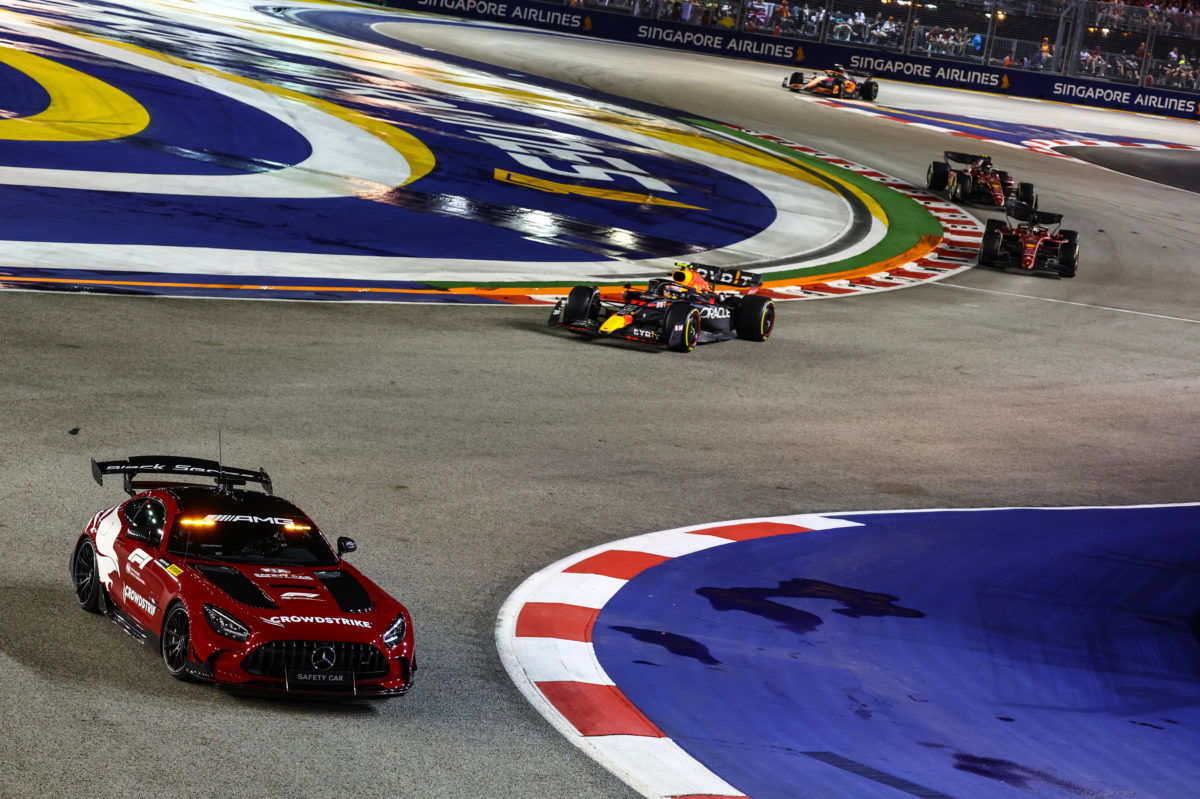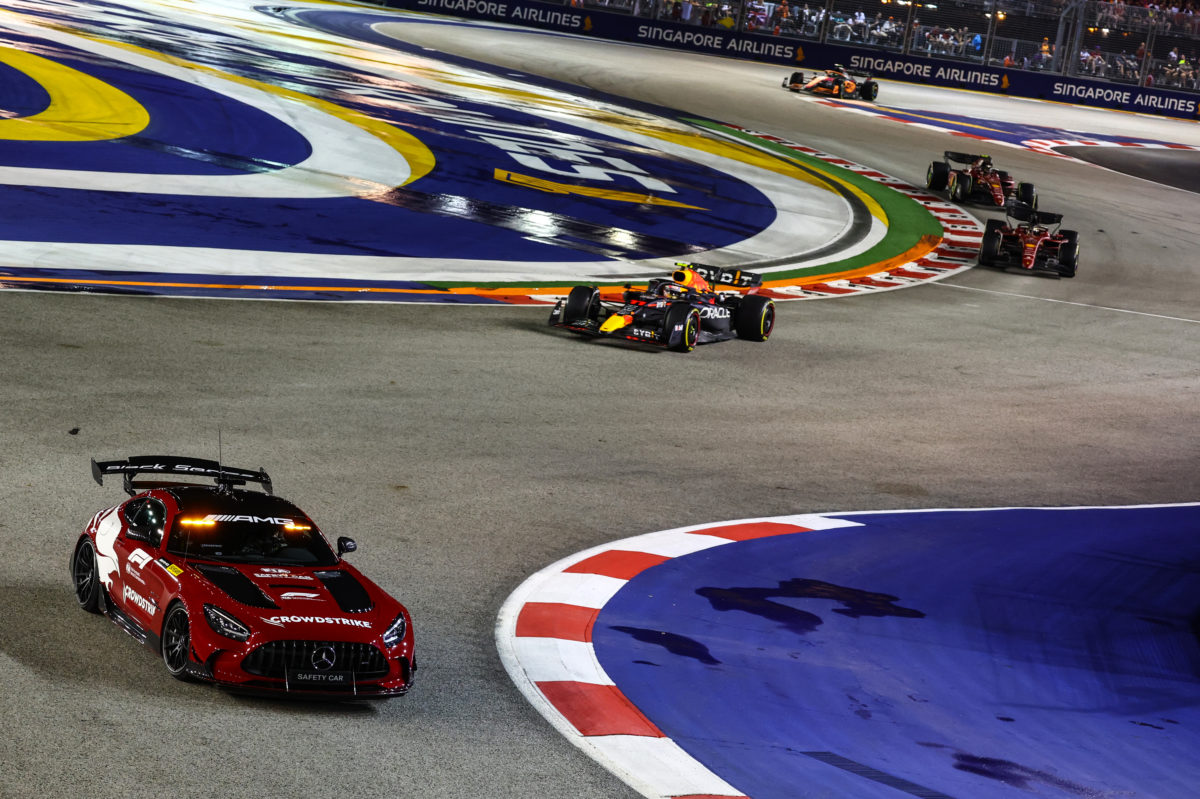

Changes have been made to the F1 standing restart procedure with immediate effect following a meeting between officials and the drivers in Azerbaijan.
It has been agreed to modify how the Safety Car manages the field before a standing restart in the wake of the Australian Grand Prix, which was interrupted on three occasions.
A takeout from that experience was that drivers found it challenging to generate temperature in their tyres on the lap to the grid as they followed the Safety Car.
From now on, there will be a 30-second delay between the Safety Car being released from the pit lane and the F1 field following suit.
When it does so, it will be under the control of the lead car.
It is a temporary measure designed to help drivers manage temperatures more effectively before a standing start.
The changes have been made to the Event Notes while discussions between the FIA, teams, and Formula 1 will occur regarding more permanent regulation changes.
Standing restarts became a hot topic following the Australian Grand Prix, with the sport in the crosshairs for appearing to promote the entertainment spectacle ahead of the sporting purity.
That criticism came primarily for how the penultimate red flag was shown after Kevin Magnussen tagged the wall exiting Turn 2.
At the time, it was not immediately apparent that there were metallic shards on the racing surface, and the timing of the red flag was also criticised.
That information was available to Race Control, which decided to red flag the race following reports from sector marshalls regarding the debris.
That saw the race suspended before a standing restart with two laps remaining.
At that restart, chaos broke out and immediately triggered another red flag.
In that instance, the race resumed behind the Safety Car with no time left for a competitive conclusion to the grand prix.




















Discussion about this post